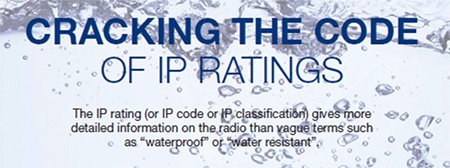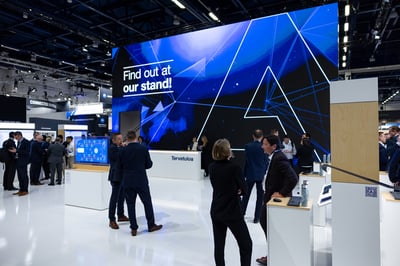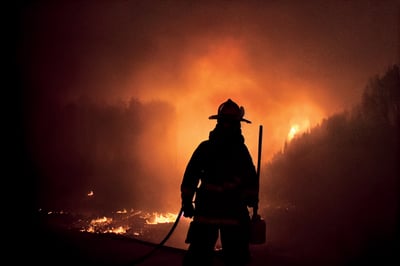What do you think - which mobile device has better protection against dust and water, one with IP65 classification or another that is IP67 rated?
IP67, right? Because the number is bigger?
Wrong. A mobile device with IP67 rating is not necessarily better than IP65. But why? This blog post explains all about IP protection ratings.
IP65 and IP67 cannot be compared as numbers. The numbers indicate that the devices have been tested in different circumstances. Whether IP67 is better than IP65, for example, depends on where the device will be used and how. For some uses, the IP65 rating is in fact better than IP67. Some devices can even have both of these ratings, such as the Tactilon Dabat hybrid device from Airbus.
For an overview, download the infographic which cracks the code of IP ratings for mobile devices.
Here, you will find the answers to the following questions:
- What does Ingress Protection mean?
- What do the numbers in IP ratings stand for?
- What does IP67 rating mean?
- What does IP65 rating mean?
- Which IP classification is the best?
- Which IP rating is best for your device?
What does Ingress Protection mean?
The IP stands for Ingress Protection, and all IP ratings are defined in the EN 60529 international standard.
IP classification consists of two independent numbers which refer to two different tests.
The first number shows the degree of intrusion protection – how well the device is protected against solids (dust and dirt). The digit can vary from 0 to 6. No special protection or not rated at all gets a 0, while a device that is totally dust tight has a rating of 6.
The second number defines how well the device is protected against liquids - fresh water and moisture (drips, sprays and submersion). This figure is between 0 for “No protection” and 9. However, the figure 9 is reserved for special equipment, for example some road vehicles - but it is not used for electrical devices.
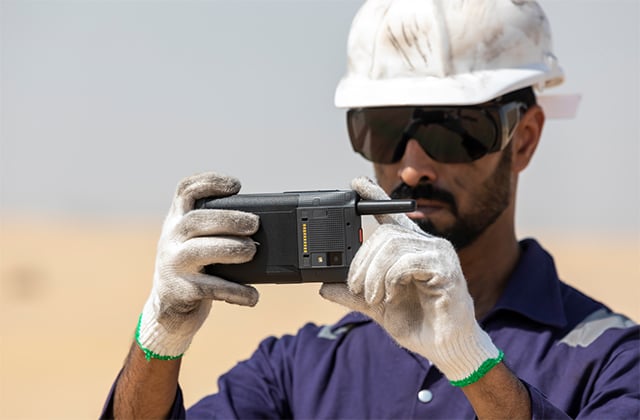
What do the numbers in IP ratings stand for?
The standards for the two figures in IP protection ratings are as follows:
First digit
- 0 – No protection
- 1 – Protected against solid objects over 50 mm (accidental touch by hands)
- 2 – Protected against solid objects over 12 mm (such as fingers)
- 3 – Protected against solid objects over 2.5 mm (such as tools and wires)
- 4 – Protected against solid objects over 1 mm (tools, wires and small wires)
- 5 – Protected against dust. Limited ingress (no harmful deposit)
- 6 – Totally protected against dust.
Second digit
- 0 – No protection
- 1 – Protected against vertically falling drops of water
- 2 – Protected against direct sprays up to 15 degrees from vertical
- 3 – Protected against direct sprays up to 60 degrees from vertical
- 4 – Protected against sprays from all directions. Limited ingress permitted.
- 5 – Protected against low-pressure jets of water from all directions. Limited ingress permitted.
- 6 – Protected against strong jets of water (for use on ship decks). Limited ingress permitted.
- 7 – Protected against the effect of immersion at depth between 15 cm and 1 meter. 30-minute test.
- 8 – Protected against long periods of immersion. Depth (more than 1 meter) specified by manufacturer.
- 9 – Protected against close-range high pressure, high-temperature spray downs.
What does IP67 rating mean?
For example, the IP67 rating may look like sixty-seven, but it’s really IP-six-and-seven.
A radio, mobile phone or indeed any device classified IP67 is:
- dust tight (the 6 is the highest score in the classification code)
- and it will continue to work even after being immersed in water up to 1 meter deep for a maximum of 30 minutes (the 7 in the classification code).
What does IP65 rating mean?
Another example: a device with IP65 classification. This device is also dust tight, as indicated by the 6. In addition, the 5 in the classification code says that water projected from a nozzle will not harm the device.
Which classification is the best?
Note that the classification doesn’t require that the radio needs to pass every test leading up to this rating. In other words, an IP67 classified device has not been tested against jets of water – only against being submerged in still water.
In practice, this would mean that the device could be placed in one-meter-deep water for a short time and it would still work. But this device would not be certain to withstand a jet from a water hose. In other words, you should not rinse the IP67 classified device under a tap and expect it to work afterwards.
In contrast, an IP65 rated device can manage the water jet, but it would not necessarily work after being under water for half an hour.
Handpicked related content
What does IP classification testing mean in practice?
Take a look at IP65 classification testing - watch a video: A TETRA radio gets rough treatment in classification tests
Most of the professional devices and radios on the market are rated either IP54/IP55 or IP65/IP67. Some consumer smartphones have not been tested and therefore they have no IP classification.
However, there are smartphones and hybrid devices with an IP67 or even IP68 rating, where class 8 is specified by the manufacturer.
Which IP rating is best for your device?
When you think about the way you use your device, which would be more useful for you? To be able to drop the radio in shallow water, or to be sure that the radio will work even after being hit by a jet of water?
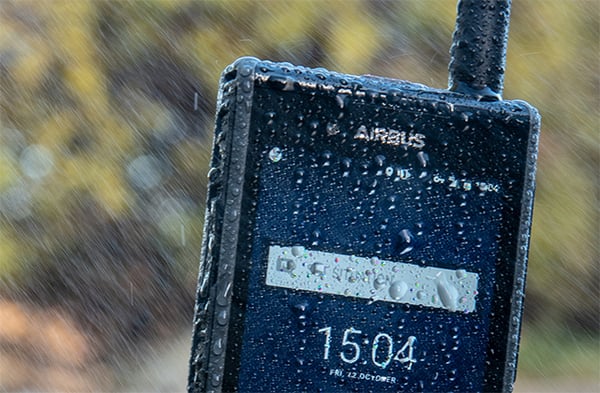
Think about your daily working conditions. Do you work outside in all kinds of weather? Do you need to communicate even in the rain, or close to water jets? Or are you working inside, safe from rain and storms but next to containers of water (one meter deep maximum).
And if you really need your device to withstand both immersion and water jets, you need it to be both IP65 and IP67 classified.
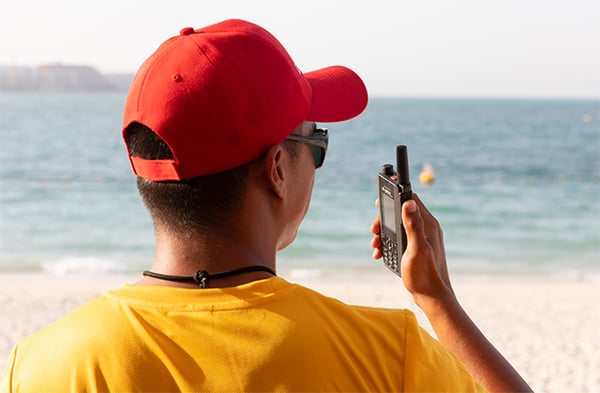
Check this infographic which cracks the IP rating codes. It addresses PMR radio ratings, but it also applies to other mobile devices and smartphones. Click to download the infographic in pdf format for your reference:
So, the optimal level of IP protection depends very much on where you will use the device. As a rule, you will want your professional mobile device to have an IP rating of IP65 or IP67 (or both, like the Tactilon Dabat hybrid device).
What else besides IP ratings do people need to know about hybrid devices? Take a look here: “This is what professionals really want to know about hybrid devices”
Editor's note: This blog post was first published in November 2015 and it has since been updated for accuracy and comprehensiveness.
Sources:
https://www.enclosurecompany.com/ip-ratings-explained.php
https://www.rainfordsolutions.com/ip-enclosure-ratings-and-standards
https://www.mpl.ch/info/IPratings.html
https://www.androidauthority.com/ip-ratings-explained-746306/

